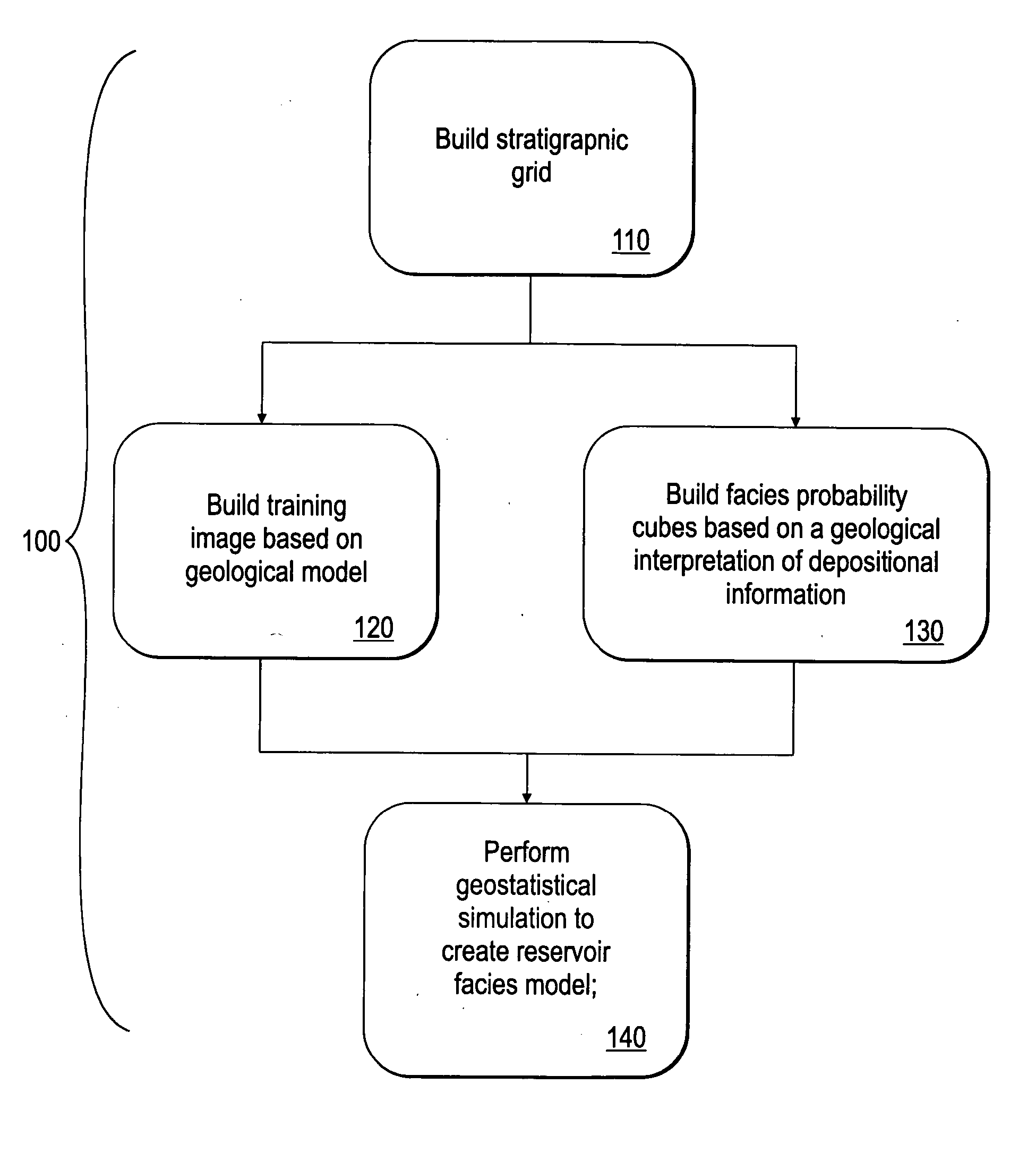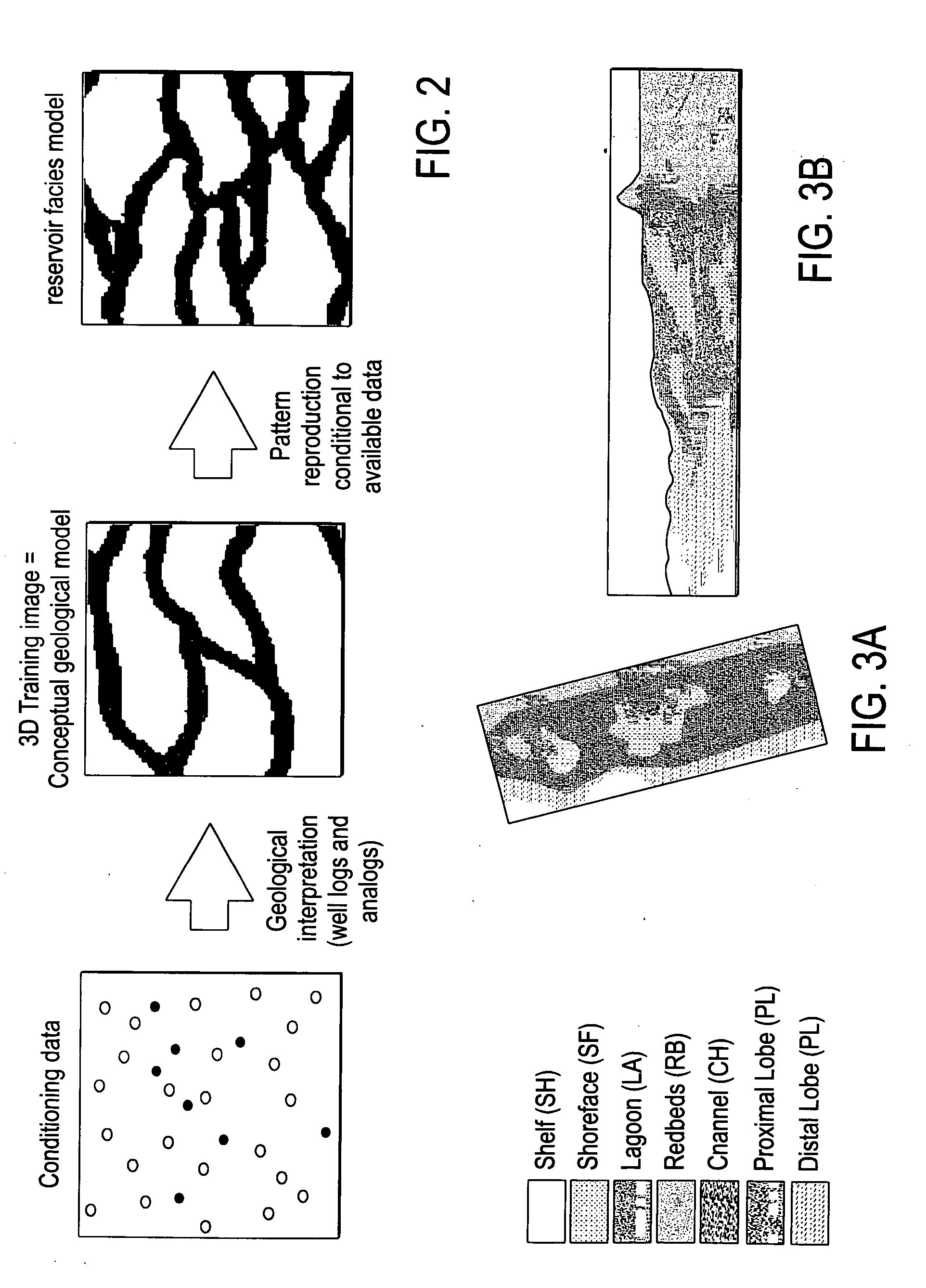Method for making a reservoir facies model utilizing a training image and a geologically interpreted facies probability cube
a facies model and probabilistic cube technology, applied in the field of reservoir facies models, can solve the problems of failing to adequately model reservoirs with sparse data collected at a limited number of wells, both simulation methods fail to account for valuable information, and give the modeler a very limited control on the continuity and the geometry of simulated facies
- Summary
- Abstract
- Description
- Claims
- Application Information
AI Technical Summary
Problems solved by technology
Method used
Image
Examples
Embodiment Construction
[0039]FIG. 1 shows a workflow 100, made in accordance with a preferred embodiment of the present invention, for creating a reservoir facies model. In particular, the workflow uses a training image, in conjunction with a geologically-interpreted facies probability cube as a soft constraint, in a geostatistical simulation to create a reservoir facies model. A first step 110 in the workflow is to build a S-grid representative of a subsurface region to be modeled. The S-grid geometry relates to reservoir stratigraphic correlations. Training images are created in step 120 which reflect interpreted facies types, their geometry, associations and heterogeneities. A geologically-interpreted facies probability cube is then created in step 130. This facies probability cube captures information regarding the relative spatial distribution of facies in the S-grid based upon geologic depositional information and conceptualizations. The facies probability cube ideally honors local facies distributi...
PUM
 Login to View More
Login to View More Abstract
Description
Claims
Application Information
 Login to View More
Login to View More - R&D
- Intellectual Property
- Life Sciences
- Materials
- Tech Scout
- Unparalleled Data Quality
- Higher Quality Content
- 60% Fewer Hallucinations
Browse by: Latest US Patents, China's latest patents, Technical Efficacy Thesaurus, Application Domain, Technology Topic, Popular Technical Reports.
© 2025 PatSnap. All rights reserved.Legal|Privacy policy|Modern Slavery Act Transparency Statement|Sitemap|About US| Contact US: help@patsnap.com



